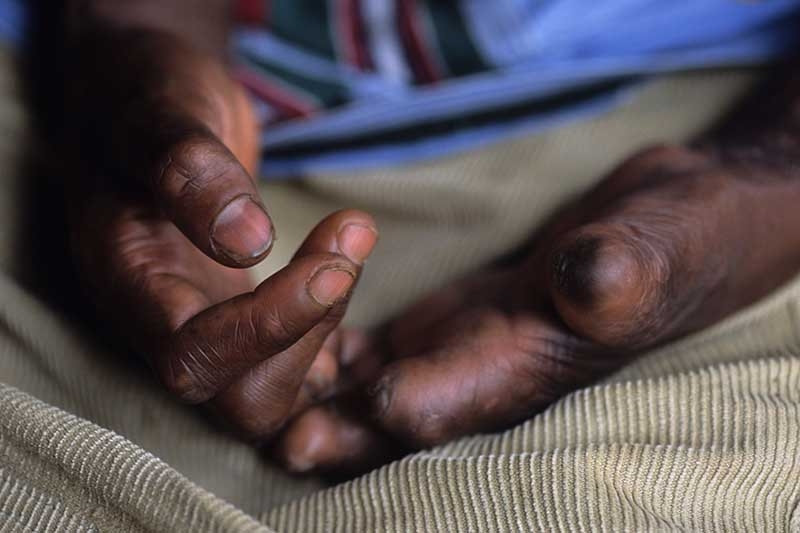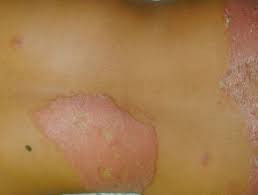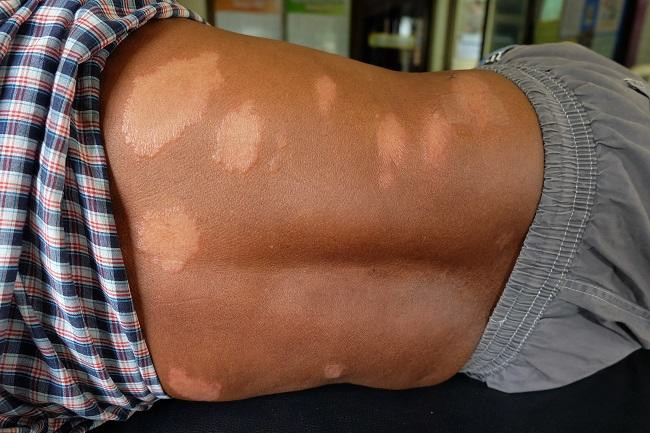Definition
Leprosy (another name: Hansen’s disease) is an infectious disease that causes skin lesions and nerve damage to the arms, legs, and other body parts. The disease exists all over the world. Currently, there are about 208,000 people infected with leprosy worldwide. Leprosy is most prevalent in Africa and Asia, especially in areas with tropical or subtropical climates.
Causes
Leprosy is caused by a bacteria called Mycobacterium leprae. Leprosy is also known as Hansen’s disease, after the scientist who discovered the bacteria in 1873. The bacteria multiply slowly, so the disease usually only appears after an average of 5 years. Symptoms may appear after 1 year but can also occur after 20 years or more.
The way of transmission isn’t exactly known, but it is thought that the bacteria is transmitted through droplets that spread when someone coughs or sneezes. Not only that, close physical contact with an infected person can also spread leprosy. Physical contact, such as shaking hands, hugging, or sitting next to an infected person while riding public transportation or eating together, cannot spread leprosy. A mother with leprosy cannot spread the infection to her baby, as the bacteria cannot pass through the placenta. In addition, the disease is not transmitted through intercourse.
Risk factor
Risk factors for leprosy are as follows:
- Close contact. Close contact with an infected person increases a person's risk of contracting the disease.
- Exposure to armadillos. In the southern region of the United States, Mycobacterium leprae is found naturally in armadillos. However, the exact transmission of this bacteria from armadillos to humans is unknown.
- Age. The older a person is, the higher the risk of contracting leprosy. Some studies show that transmission peaks at 5-15 years of age (children) and above 30 years of age.
- Genetic factors. Genes affect a person's immune response to the bacteria, regardless of the contact distance.
- Immunosuppression. Medications that suppress the immune system or diseases of the immune system itself can cause a person to develop leprosy more easily. Leprosy usually occurs after receiving organ grafts, chemotherapy, HIV/AIDS infection, and taking medications for symptoms of autoimmune diseases (immune cells attacking their body parts).
Symptoms
The main symptoms of leprosy are:
- Muscle weakness
- Numbness in the hands, arms, feet, and legs
- The appearance of skin lesions
- These skin lesions have decreased sensation of touch, temperature, and pain; these symptoms do not disappear within a few weeks
- Usually, these skin lesions appear lighter than the natural skin color or reddish due to inflammation
The doctor will count the number of skin lesions and the affected nerves to diagnose leprosy. Medical science currently recognizes three leprosy classification systems, namely tuberculoid/lepromatous, World Health Organization (WHO) classification, and Ridley-Jopling classification. These classifications will differentiate leprosy treatment later on.
The tuberculoid/lepromatous classification depends on a person's immune response, which can be explained as follows:
- Tuberculoid leprosy. The body’s immune response is good in this type, so the disease is mild and less contagious. There are fewer skin lesions in this type.
- Lepromatous leprosy. The body’s immune response is poor in this type, so the disease is more severe and highly contagious. The disease affects the skin, nerves, and other organs. Skin sores are numerous and may form lumps.
- Borderline leprosy. In this type, there are features of both tuberculoid and lepromatous leprosy. This type is in between the previous two types.
Meanwhile, the World Health Organization (WHO) classification is simpler, namely:
- Paucibacillary. In this type, the number of skin lesions is less than or equal to five, and no bacteria are detected on skin scraping examination.
- Multibacillary. In this type, the number of skin sores is more than five or bacteria are not detected on skin scraping examination
The Ridley-Jopling classification divides the disease into five categories based on the severity of symptoms. Usually, this classification is used for clinical studies.
People with leprosy may also experience immune reactions before, during, and after treatment. There are two types of leprosy reactions: type 1 (reversal reaction, T1R) and type 2 (erythema nodosum leprosum, ENL). In T1R, patients may experience some of the following symptoms for several months:
- Redness and swelling of skin associated with large nerves or the face
- Redness of existing skin lesions
- Inflammation due to reactions that cause deformation and paralysis
- Open sores on the skin
- Weakened or lost nerve function
Meanwhile, type 2 reaction (erythema nodosum leprosum), as the name suggests, has symptoms of reddish nodules that suddenly appear and are painful. These nodules may be located near the skin's surface or deep in the skin. Usually, these nodules appear on the limbs and disappear within a few days.
Diagnosis
If you are suspected of having leprosy, the doctor will physically examine the skin's nerves. The doctor may proceed with skin scraping if the skin area is numb. The skin lesions will be scraped slightly and examined in the laboratory. This is conducted to look for Mycobacterium leprae, which will be used to determine the classification of leprosy.
In addition, the doctor may also perform a lepromin skin test. The inactivated bacteria will be injected slightly under the skin in this test. The doctor will observe the injected area after 3 days and 28 days to see if there are leprosy reactions. The presence or absence of a reaction will help the doctor determine the classification of leprosy based on the Ridley-Jopling criteria. People who do not have leprosy will not have any response to this test.
Management
The standard therapy for leprosy is fixed-dose combination antibiotics. These antibiotics are given together to prevent bacterial immunity to drugs (drug resistance). The commonly used medicines are dapsone, rifampin, and clofazimine. The dosage of these medicines differs depending on the classification of leprosy. These medicines are also given for a long time, ranging from 12 to 24 months.
Therapy is also done to treat leprosy reactions. Usually, doctors prescribe medicines to reduce inflammation caused by leprosy reactions.
Complications
Leprosy has severe complications if not treated immediately. These complications include:
- Disfiguration of extremities
- Hair loss, especially of the eyebrows and eyelashes
- Muscle weakness
- Permanent nerve damage to hands and feet
- Inability to use hands and feet
- Chronic nasal congestion, nosebleeds, and collapse of nasal septum
- Inflammation of the iris of the eye
- Glaucoma, an eye disease that causes damage to the nerves of the eye
- Blindness
- Erectile dysfunctions in men
- Infertility
- Kidney failure
Prevention
The best way to prevent leprosy is to avoid long-term close contact with untreated leprosy patients.
When to see a doctor?
You should consult a doctor if you have skin lesions followed by numbness or sudden numbness in the extremities. The sooner leprosy is diagnosed, the sooner treatment can be done before the disease spreads to other body parts and worsens. Leprosy is a disease that is difficult to diagnose quickly because it resembles many other diseases, hence the name "the great imitator." You may need to observe your symptoms and consult your doctor several times before being diagnosed with leprosy.
Looking for more information about other diseases? Click here!
- dr Nadia Opmalina
Bhandari, J., Awais, M., Robbins, B., & Gupta, V. (2021). Leprosy. Retrieved 11 May 2022, from https://www.ncbi.nlm.nih.gov/books/NBK559307/
Donohue, M., & Sampson, S. (2022). Leprosy: Symptoms, Pictures, Types, and Treatment. Retrieved 11 May 2022, from https://www.healthline.com/health/leprosy
Leprosy. (2022). Retrieved 11 May 2022, from https://www.who.int/news-room/fact-sheets/detail/leprosy
Miller, K., & Nazario, B. (2020). Leprosy Symptoms, Treatments, History, and Causes. Retrieved 11 May 2022, from https://www.webmd.com/skin-problems-and-treatments/guide/leprosy-symptoms-treatments-history











